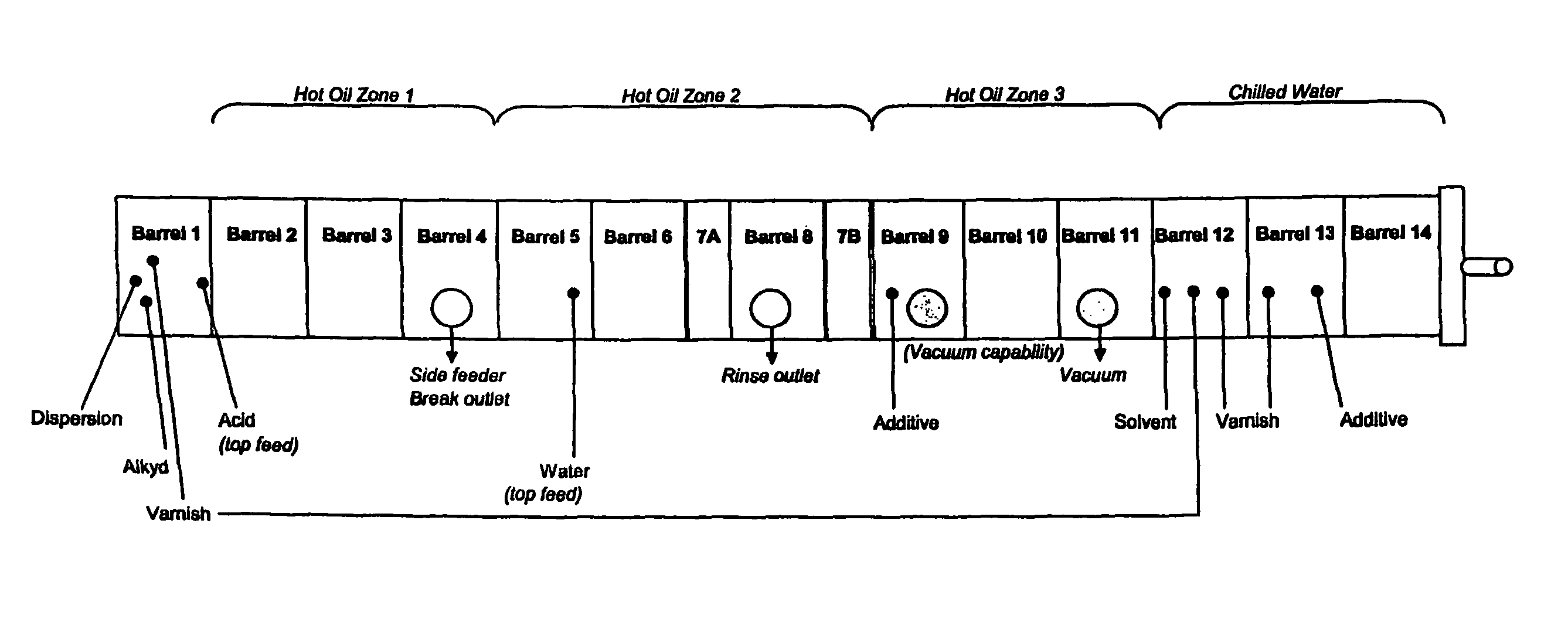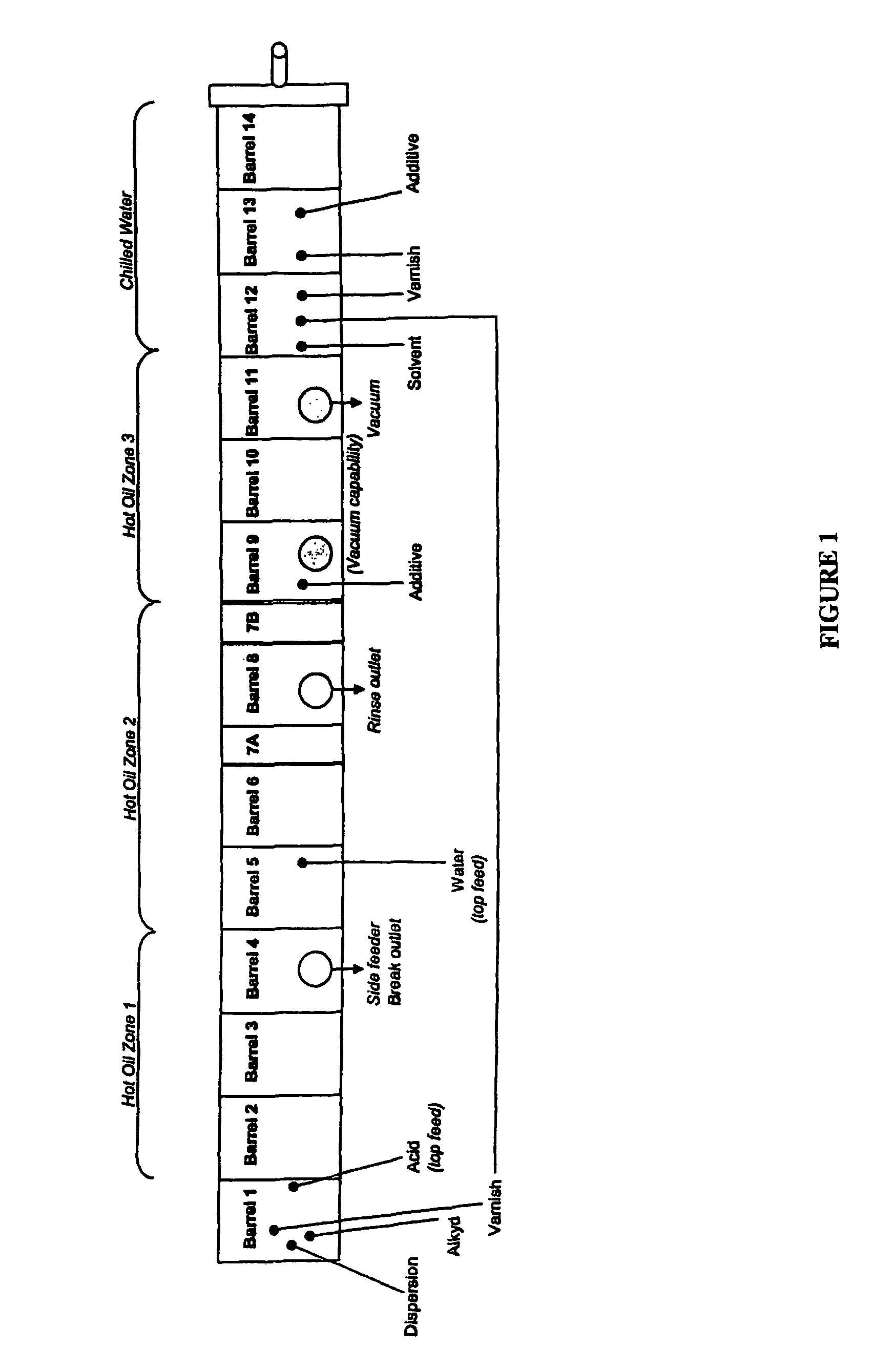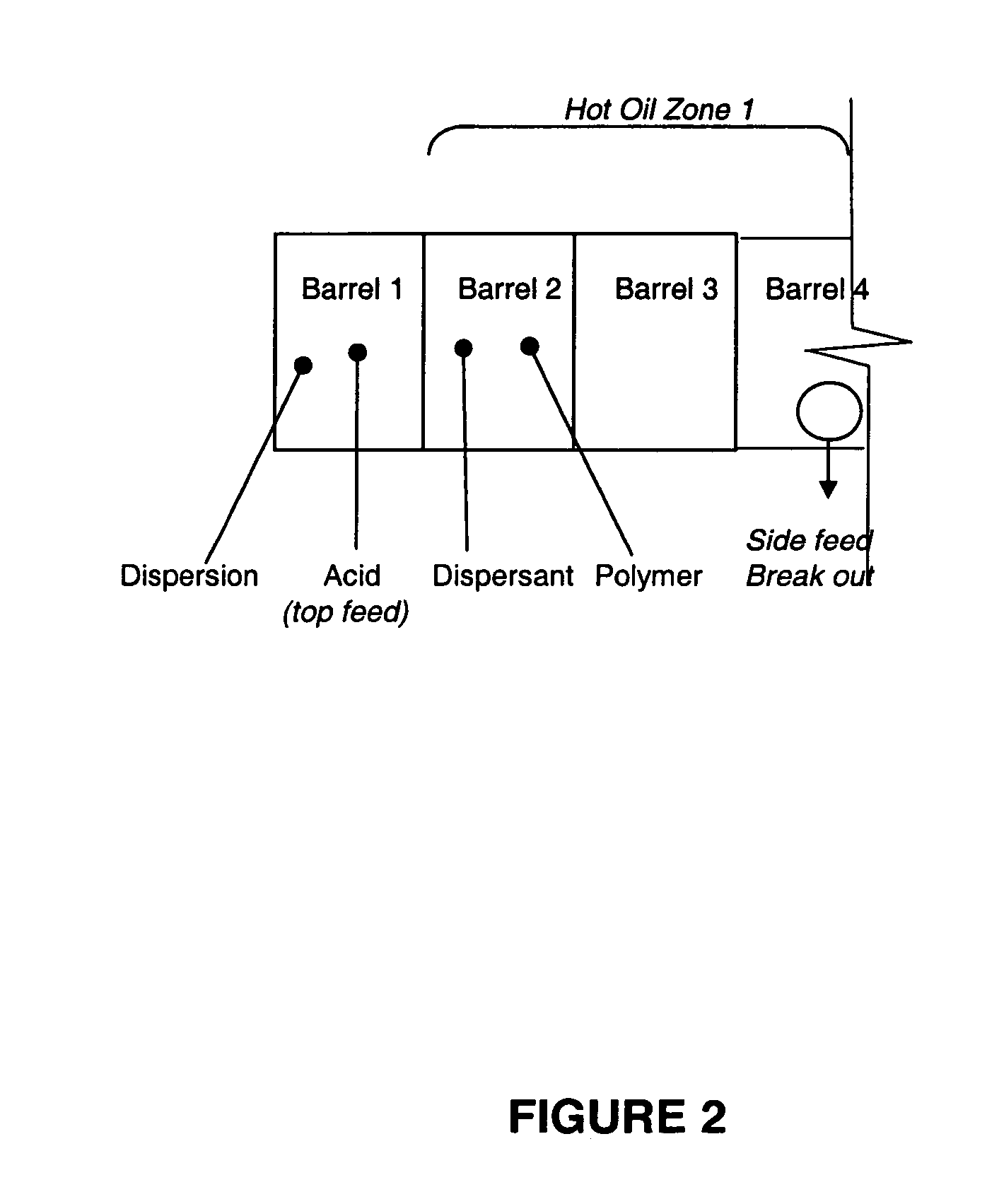Processes for preparing organic pigment dispersions and ink
a technology of organic pigment and ink, which is applied in the directions of fatty acid chemical modification, transportation and packaging, rotary stirring mixers, etc., can solve the problems of color shift, labor-intensive process that requires careful monitoring, and the flushing process requires additional time and materials, and achieves the effect of using long shelf li
- Summary
- Abstract
- Description
- Claims
- Application Information
AI Technical Summary
Benefits of technology
Problems solved by technology
Method used
Image
Examples
first embodiment
[0032]In the first embodiment, the stable, water-based pigment dispersion is fed into a first zone of the extruder, along with the organic medium and a separate feed of a destabilizing agent. The aqueous pigment dispersion, precipitating agent, and organic medium can be added at controlled, consistent rates for production of consistent flush product. For example, they may each be fed from a line or tank, which may have a stirrer, and may be metered in with, for example, a pump.
[0033]Preferably, the organic medium, stable, water-borne pigment dispersion, and destabilizing agent are each introduced at fairly constant rates. The relative amounts of the organic medium and the pigment of the water-based pigment dispersion for optimum processing can be determined based upon the particular materials chosen, but in general the amounts remain the same as those expected for conventional batch flushing processes. For example, the amount of organic medium introduced per unit of time may be from...
second embodiment
[0035]In the invention, the stable, water-based pigment dispersion and separate feed of destabilizing agent are introduced into the extruder, mixed, and then, at a downstream point, the organic medium is added In this embodiment, the water-based pigment dispersion is first substantially destabilized with the destabilizing agent before the organic medium is added. The destabilized aqueous pigment dispersion may have a high viscosity that is advantageous for mixing with a high viscosity polymer melt, such as may be used in making a masterbatch.
[0036]A twin-screw extruder used in a preferred embodiment of the method is shown in FIG. 1. The first zone comprises screw elements for mixing the destabilized, aqueous pigment and the organic medium. The destabilized, aqueous pigment is thought to be like a high solids presscake in the extruder, and the first zone should include one or more elements for high shear mixing. Referring again to the FIG. 1, Barrel 1 has four separate ports for intr...
PUM
| Property | Measurement | Unit |
|---|---|---|
| temperature | aaaaa | aaaaa |
| screw diameter | aaaaa | aaaaa |
| water content | aaaaa | aaaaa |
Abstract
Description
Claims
Application Information
 Login to View More
Login to View More - R&D
- Intellectual Property
- Life Sciences
- Materials
- Tech Scout
- Unparalleled Data Quality
- Higher Quality Content
- 60% Fewer Hallucinations
Browse by: Latest US Patents, China's latest patents, Technical Efficacy Thesaurus, Application Domain, Technology Topic, Popular Technical Reports.
© 2025 PatSnap. All rights reserved.Legal|Privacy policy|Modern Slavery Act Transparency Statement|Sitemap|About US| Contact US: help@patsnap.com



